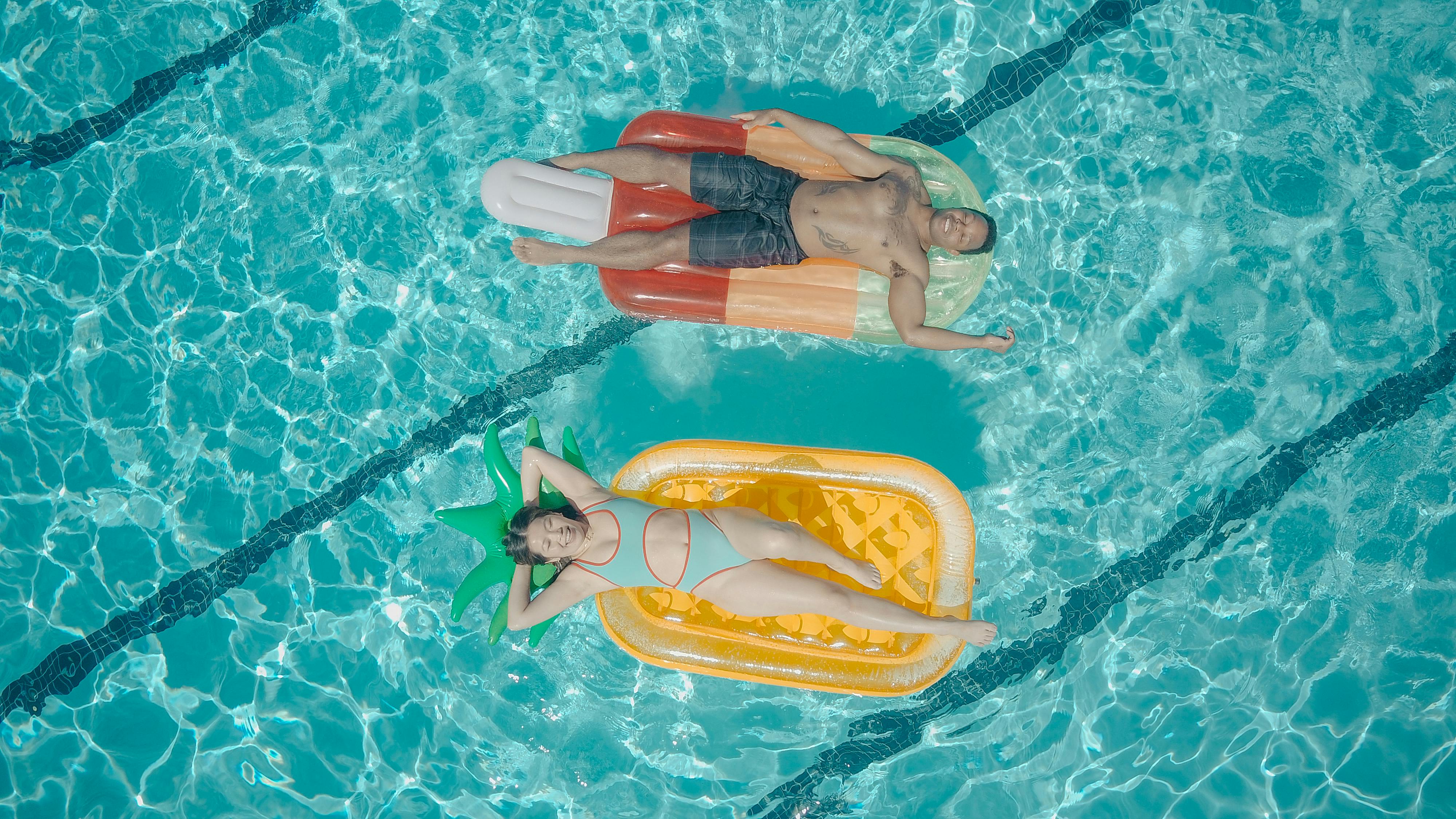Water is essential to human life, and it is important to understand the type of water we are drinking. Distilled water has become increasingly popular over recent years due to its perceived health benefits. Many people believe that this type of water is free of contaminants, including chlorine. However, it is important to understand whether distilled water actually contains chlorine or not. In this article, we will discuss whether distilled water contains chlorine and the potential implications for drinking it.No, distilled water does not have chlorine. Distillation is a process in which water is boiled to evaporate it and then condensed back into a liquid form. This removes any impurities, including chlorine, from the water.
What Is Distilled Water?
Distilled water is water that has been purified through a process of distillation. This process involves boiling the water and then condensing the steam back into a liquid form. The condensed steam is then collected and stored in a separate container, leaving behind any contaminants or impurities. Distillation is one of the most effective ways to purify water, as it removes virtually all bacteria, viruses, heavy metals, minerals, and other impurities from the water.
Distilled water has many practical uses, including drinking water and in medical applications such as intravenous (IV) solutions. It is also used in industrial processes such as boiler feedwater systems and car batteries. Because it has been purified through distillation, distilled water does not contain any minerals or other impurities that could cause corrosion or scaling within a system.
Distilled water has no taste or odor since all of its impurities have been removed during the distillation process. This makes it ideal for drinking as it does not have any unpleasant tastes from chemicals or minerals that may be present in tap water. Additionally, distilled water can be used to make ice cubes without leaving behind any residue from tap water.
In addition to its practical uses, distilled water also plays an important role in scientific research and experiments. Distilled water can be used to create controlled environments for experiments that require pure samples of liquids or gases with no other contaminants present. It can also be used to clean delicate instruments and surfaces that cannot be washed with regular tap water due to the presence of minerals or other substances in the tap water.
Overall, distilled water is an important resource for many different uses due to its purity and versatility. From drinking and medical applications to industrial processes and scientific experiments, distilled water is a valuable resource that can be used for many different purposes.
What Is Chlorine?
Chlorine is a chemical element found in nature and it is the second lightest halogen. It is a yellowish-green gas at room temperature and pressure. Chlorine is an important component of many common products, including table salt and bleach. It has a strong odor and taste and can be toxic in high concentrations. Chlorine is also used for swimming pool disinfection, water purification, industrial waste treatment, and other sanitation applications.
Chlorine has been used for centuries to disinfect water supplies and keep them safe from disease-causing organisms. It is effective against bacteria, viruses, mold, mildew, algae, and some parasites. Chlorination has been credited with greatly reducing the incidence of waterborne diseases such as cholera and typhoid fever since its introduction in the late 19th century.
In addition to its use in household products and sanitation applications, chlorine is also used in many industrial processes such as paper production, oil refining, plastic production, rubber manufacturing, textiles production, tanning leathers and dyeing fabrics. Chlorinated compounds are also used as solvents in dry cleaning processes.
Chlorine is an essential nutrient for humans; it helps with digestion and metabolism. Too much chlorine can be harmful however; exposure to high levels of chlorine gas can cause respiratory irritation or even death.
Benefits of Drinking Distilled Water
Drinking distilled water has many benefits. Distilled water is free of impurities and is beneficial for those who have certain medical conditions. It can also help to improve the health of individuals who are looking to improve their overall well-being. Here are some of the benefits of drinking distilled water:
Removes Contaminants
Distillation removes most contaminants from the water, including bacteria, viruses, minerals and chemicals. The process involves boiling the water and then condensing it into a clean container, leaving contaminants behind. This makes it a great choice for people with weakened immune systems or sensitive digestive systems.
Improves Hydration
Distilled water contains no calcium or magnesium, which means it hydrates better than tap water. This is especially beneficial for athletes who need to stay hydrated during strenuous physical activity.
Reduces Health Risks
Since distilled water is free of contaminants, it carries less risk of developing diseases associated with contaminated drinking water. It also helps reduce the risk of developing certain types of cancer associated with long-term exposure to certain chemicals found in tap water.
Improves Taste
The lack of minerals in distilled water gives it a pure taste that many people enjoy. This makes it a great choice for those who don’t like the taste of tap water or bottled mineral waters.
Overall, drinking distilled water can be beneficial for those looking to improve their health and well-being. It can help to remove contaminants from drinking water and improve hydration, as well as reduce health risks associated with contaminated drinking water. In addition, its lack of minerals gives it a pure taste that many people enjoy.
Is Drinking Distilled Water Safe?
Drinking distilled water is generally safe, though there are some minor risks. Distilled water is a type of purified water that has had all of its minerals and impurities removed through a process of distillation. As a result, it is considered to be “pure” water and is free from bacteria, viruses, and other contaminants. It is also free from any kind of taste or odor. This makes it ideal for many household uses such as drinking, cooking, and even bathing.
However, there are some potential risks associated with drinking distilled water on a regular basis. Although distilled water does not contain any mineral content, the body still requires minerals for proper functioning. Therefore, drinking distilled water over an extended period of time can lead to mineral deficiencies in the body since the body is unable to get the minerals it needs from the water itself. In addition, some research has suggested that long-term use of distilled water can lead to an imbalance in the body’s acid-base balance which can result in symptoms such as fatigue and headaches.
It’s important to note that these potential risks are relatively minor compared to those associated with drinking contaminated or untreated water sources. Therefore, if you have access to clean and safe drinking water then it is generally recommended that you opt for this over distilled water whenever possible. However, if you must drink distilled water then it is best to do so in moderation and make sure you get your necessary minerals through other sources such as food or supplements.

Distilled Water vs. Tap Water
Distilled water and tap water are both sources of drinking water, but there are some key differences between the two. Distilled water has been purified through a distillation process, removing contaminants that may be present in tap water such as minerals, chemicals, or bacteria. This process also removes essential minerals like calcium and magnesium, leaving the water with a flat taste. Tap water, on the other hand, is generally treated with chlorine to kill bacteria and may contain fluoride to help protect teeth against cavities. Since it has not been distilled, it still contains some natural minerals that may affect its taste.
In terms of safety, both types of water can be considered safe for consumption when they meet certain standards set by the Environmental Protection Agency (EPA). Distilled water meets these standards since its purification process removes any contaminants that could be potentially harmful. Tap water can also meet these standards if it has been properly treated and monitored by local authorities.
When it comes to cost-effectiveness, tap water is typically much more affordable than distilled water since there is no need for an expensive distillation process. In terms of convenience, tap water is usually readily available from faucets in homes or businesses while distilled water needs to be purchased from stores or online retailers.
In conclusion, distilled and tap waters are both sources of drinking water which have their own advantages and disadvantages depending on your needs and preferences. Both types can be considered safe when they meet EPA standards, but tap water is generally more affordable and convenient than distilled water due to its ready availability from faucets.
Distillation
Distillation is a process of separating different components of a liquid mixture based on their different boiling points. It is used to purify liquids, as well as to produce distilled alcohol and other products. The process of distillation involves heating the liquid mixture until the desired component vaporizes and allowing it to cool back into a liquid state. The vaporized component can then be collected and used while the remaining components remain in the original liquid state.
Heating the Liquid Mixture
The first step in distillation is heating the mixture until its components reach their boiling points. This is done by using a heat source such as a flame, electric coil, or steam bath. As the mixture is heated, each component will begin to vaporize at its own specific temperature. This allows for them to be separated from one another when they are collected as either vapor or liquid.
Condensing the Vaporized Component
Once the desired component has been vaporized, it must be cooled back into a liquid form so that it can be collected and used. This is done by passing the vapor through a condenser, which cools it back into a liquid state and collects it for later use. The remaining components stay in their original liquid state in the still pot or flask where they were heated.
Purifying Liquids
Distillation can also be used to purify liquids by removing unwanted impurities and contaminants from them. This is done by carefully controlling the temperature of the heat source so that only certain components are allowed to boil off and be collected while others remain in their original form in the still pot or flask. By doing this, only certain components are allowed to pass through while any impurities that may have been present are left behind in the still pot or flask.
Does Distillation Remove Chlorine From Water?
Distillation is a process that can be used to remove chlorine from water. In the distillation process, water is heated until it reaches its boiling point and then cooled down. As the water boils, the steam rises and the chlorine is left behind. The steam is then condensed and collected, creating a clean and safe drinking water. The process of distillation removes chlorine from water by separating it from other contaminants in the water, such as heavy metals or bacterial contaminants.
It is important to note that distillation does not always completely remove all chlorine from water. Depending on the quality of the source material, some chlorine may still remain in the distilled product. To ensure that all of the chlorine has been removed, a carbon filter should be used in addition to distillation. Carbon filters work by trapping contaminants like chlorine in small pores and preventing them from passing through into drinking water.
Overall, distillation can be an effective method for removing chlorine from drinking water if it is used in combination with other processes such as carbon filtration. However, it is important to note that it may not completely eliminate all traces of chlorine, so using a combination of methods is recommended for safe drinking water with minimal levels of chlorine.

Conclusion
In conclusion, distilled water does not contain chlorine, as it is removed during the distillation process. Chlorine is removed from the water due to the fact that the boiling point of water is lower than that of chlorine, so it evaporates and leaves behind pure H2O. Furthermore, distilled water has no minerals or other contaminants in it. Therefore, it is a great choice for drinking and cooking purposes as it ensures no additional chemicals are ingested by people consuming it.
Distilled water can be found in most grocery stores or can be made at home with the right equipment. It is important to note that distilled water should not be used for long-term hydration due to its lack of essential minerals needed for good health. However, if used occasionally, distilled water can provide many benefits.
Overall, distilled water does not contain chlorine and is a great choice for drinking and cooking purposes as long as you are aware of its limitations for hydration purposes.

